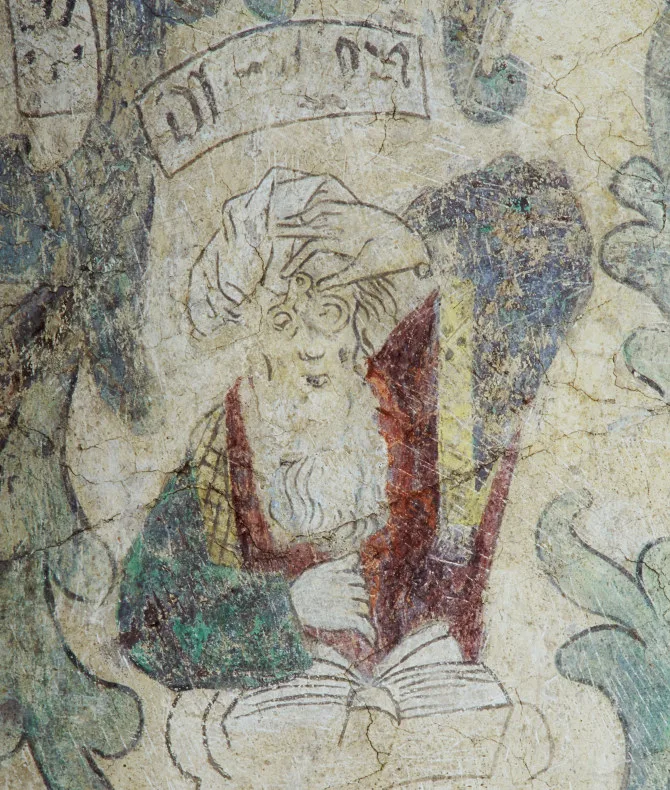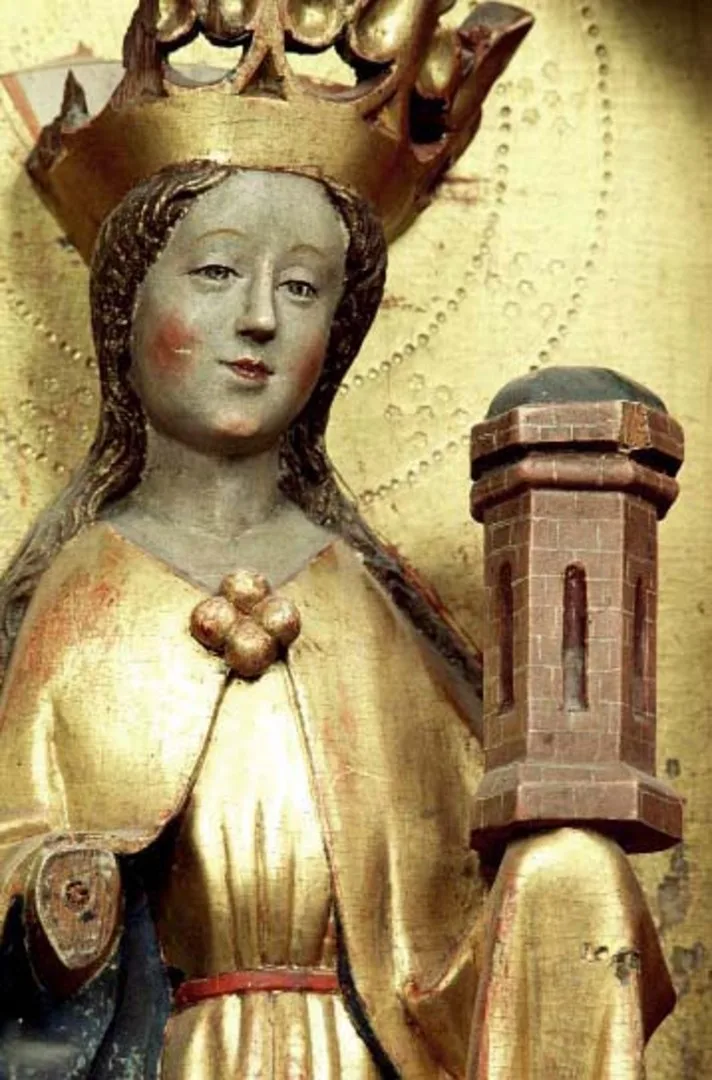The Engelbrekt Rebellion – the peasant who became king
Viking Age
AD 800 – AD 1100
Middle Ages
AD 1050 – AD 1520
Modern Age
AD 1520 – AD 2025
Between 1400 and 1435, Sweden was part of the Kalmar Union, in which Denmark, Norway and Sweden shared the same monarch. Many Swedes were discontented, as the king often favoured Denmark. This led to conflict between Swedish nobles and the crown. In 1434 Engelbrekt Engelbrektsson led a major uprising against King Eric of Pomerania, supported by disgruntled miners and townsfolk.
In 1435 a meeting was convened at Arboga where Engelbrekt Engelbrektsson was appointed commander of Sweden’s armed forces. The assembly is often described as Sweden’s first parliament, as it was the first time that peasants were invited to take part in a council meeting.
The Engelbrekt Rebellion and Karl Knutsson Bonde
In 1436, Engelbrekt was murdered by noblemen, and with his death the movement lost its popular backing. His ally, the magnate Karl Knutsson Bonde, seized power, had several of the other rebel leaders executed and sent home the rebellious peasants. In 1439, Eric of Pomerania was formally removed from the throne. His nephew, Christopher of Bavaria, became the new union king. His reign was comparatively peaceful, though rival Swedish noble factions continued to fight, and the union was increasingly fragile.
When Christopher died in 1448, Karl Knutsson Bonde was elected king of Sweden alone, and the Kalmar Union broke apart. Denmark once again attempted to conquer Sweden in 1471, but was defeated in the great battle at Brunkeberg Ridge.
After the Engelbrekt Rebellion in 1435, the Swedish Privy Council introduced a new state seal depicting Saint Eric holding the Swedish royal banner, the Three Crowns. A seal press is a tool used to emboss official documents with a seal. It was subsequently employed by all Swedish regents until the reign of Gustav Vasa in the 1520s.
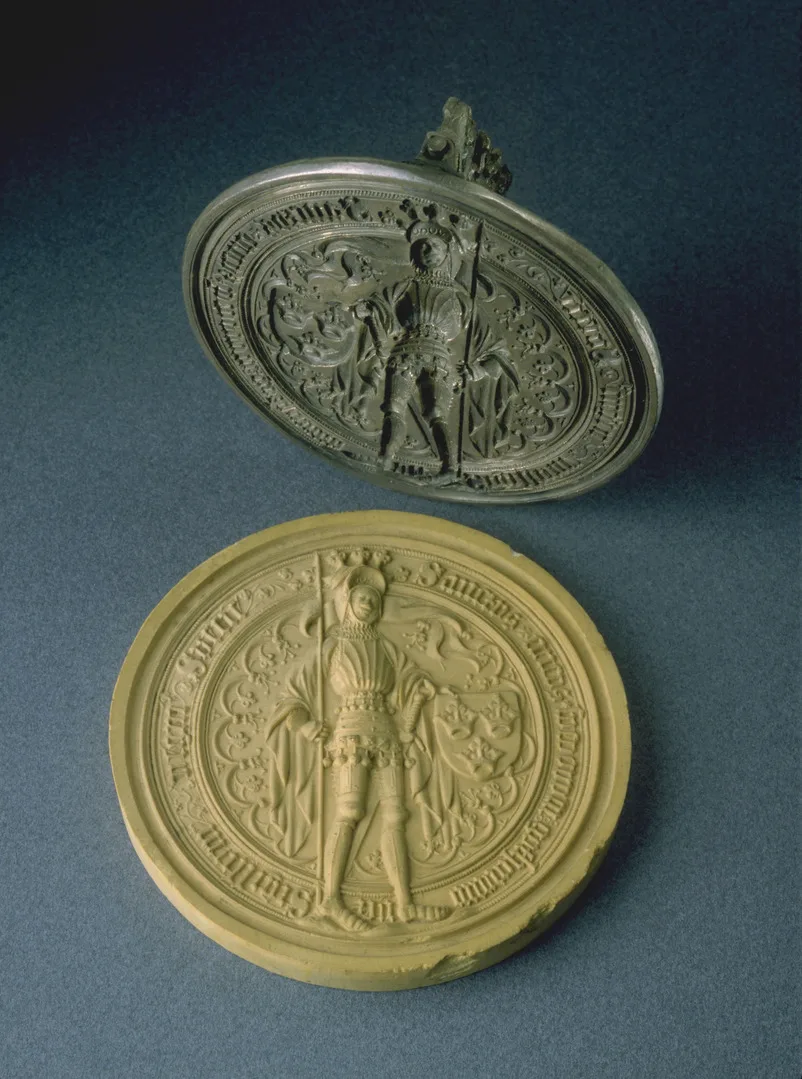
Seal of the realm
Introduced after the Engelbrekt rebellion.
King three times over
Karl Knutsson was probably born in the Swedish realm, in what is now Finland, around 1408–1409. He was king of Sweden from 1448 to 1457, when he was deposed by rebellion. He was re-elected and returned as king in 1464–1465, only to be deposed a second time. In 1467 he was once again restored to the throne and remained king until his death at Stockholm Castle on 15 May 1470.
During the 1915–16 archaeological excavation of Riddarholm Church in Stockholm, archaeologists discovered a pair of shoes in his grave. Today they survive only in fragments, resembling little more than a pile of leather scraps. Still, it is thrilling to imagine the king once wearing them. Perhaps they were even made specifically for his burial.

Karl Knutsson's shoe
The Ängsö goblet
Karl Knutsson also owned the so-called Ängsö Goblet, probably crafted in Lübeck, Germany, in the 1460s. Around the cup are twelve round medallions depicting scenes from the childhood of Christ.
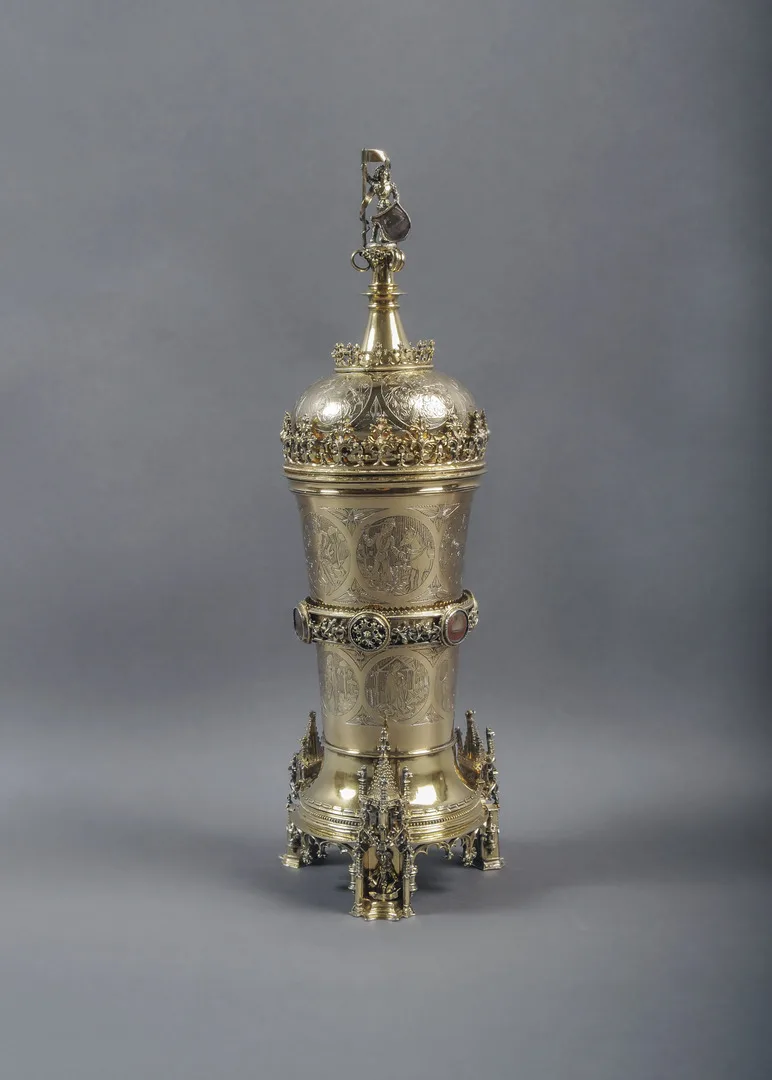
The Ängsö goblet
Made in Lübeck in the 1460s.
On view at Historiska museet in the exhibition Sveriges historia
The goblet is made of gilded silver, though the gilding is probably not original. The lid is decorated with floral and foliate motifs and human figures. One is an older bearded crowned man in a robe, probably the prophet Isaiah. Another is a man wearing a pointed cap, tunic and cloak. A woman figure wears a sleeveless gown, arm jewellery, loose flowing hair and a turban – likely the Tiburtine Sibyl, who, according to legend, foretold the birth of Christ to Emperor Augustus. Her clothing emphasises her origin in antiquity.
All the figures gesture animatedly and hold scrolls. Art historians believe the imagery is linked to Christmas. Could it be that King Karl Knutsson drank his Christmas ale from this very goblet during the Yuletide festivities?


Photo: Amica Sundström, The Swedish History Museum/SHM (CC-BY 4.0)
On the lid stands a small statuette of a young knight or squire. He carries a staff with a pennant-like banner. He wears full armour with rosette-shaped shoulder guards, though bareheaded. His flowing locks are encircled by a twisted wreath set with a plume, very much the fashion of the time, comparable to the feather on Saint George in Stockholm Cathedral (Storkyrkan). At the knight’s feet rests a shield bearing the Bonde family arms, a boat adorned with plumes.
The base of the goblet is decorated with Gothic elements such as small towers, arches and canopies, both ornamental and architectural in effect. Inset into the “feet” are female figures that may represent ancient sibyls or prophetesses.
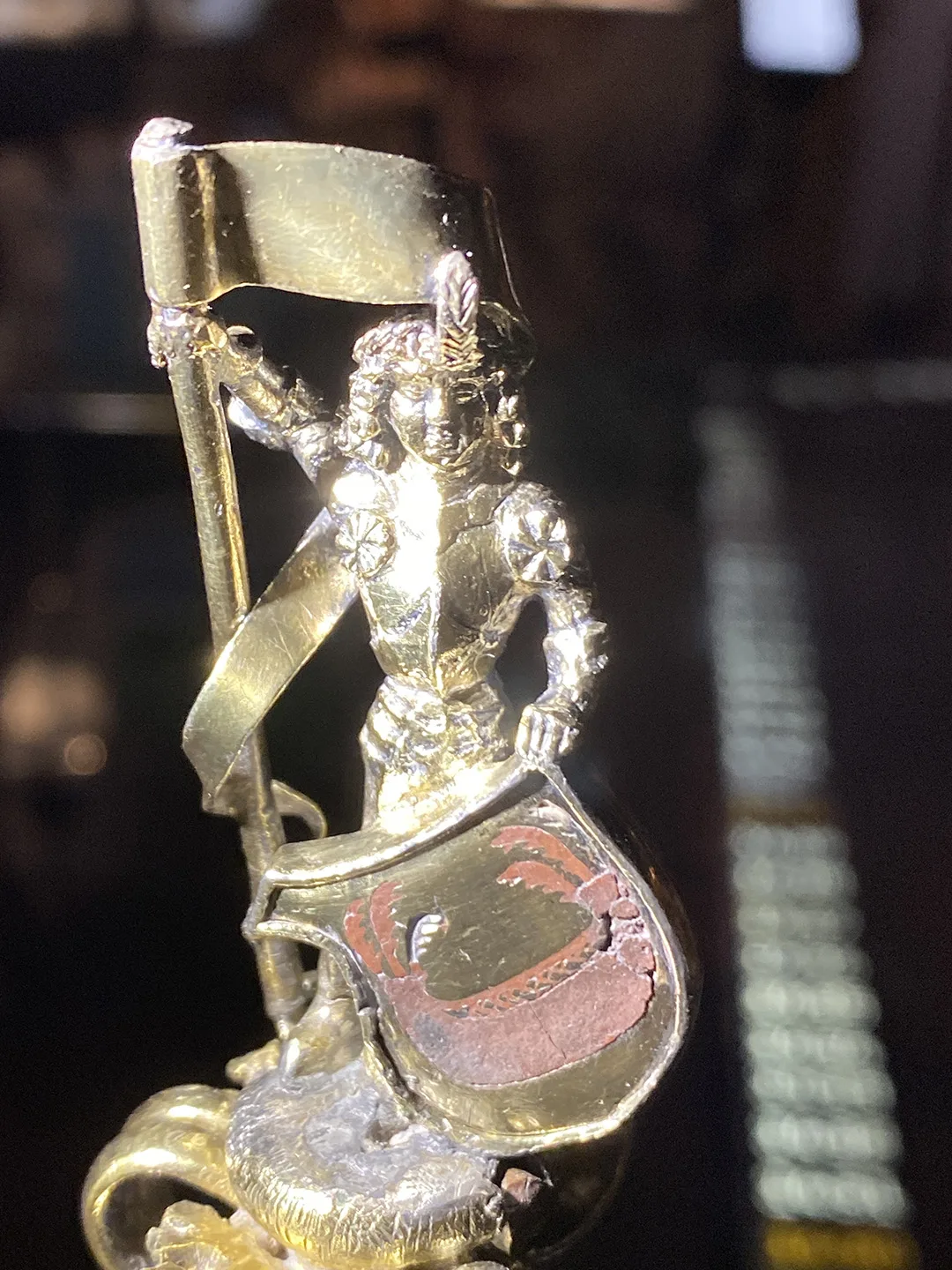
On the underside of the goblet are two hallmarks: a double-headed eagle, the symbol of Lübeck, and a barrel. The barrel mark identifies the maker as Lübeck goldsmith Franziskus Burmester, active in the city from 1454 until his death around 1505.

